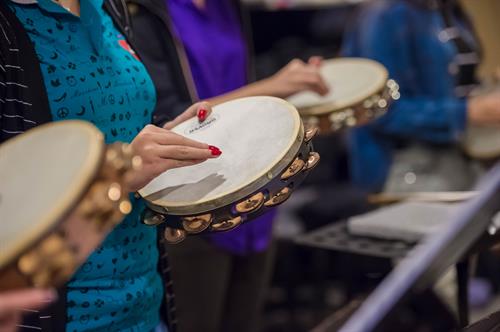

- #THE BLUE ROOM PERCUSSION STUDIO PROFESSIONAL#
- #THE BLUE ROOM PERCUSSION STUDIO SERIES#
- #THE BLUE ROOM PERCUSSION STUDIO FREE#
Towards the end of the war, saxophonist Ike Quebec was among those who recorded for the label. Thelonious Monk performing in 1947, the same year he would record his first sessions for Blue Note. Johnson, who was returning to a high degree of musical activity after having largely recovered from a stroke suffered in 1940. Willing to record artists that most other labels would consider to be uncommercial, in December 1943 the label initiated more sessions with artists such as pianist Art Hodes, trumpeter Sidney DeParis, clarinetist Edmond Hall, and Harlem stride pianist James P.

By late 1943, the label was back in business recording musicians and supplying records to the armed forces. Milt Gabler at the Commodore Music Store offered storage facilities and helped keep the catalog in print, with Wolff working for him. In 1941, Lion was drafted into the army for two years.
#THE BLUE ROOM PERCUSSION STUDIO PROFESSIONAL#
The label soon became known for treating musicians uncommonly well-setting up recording sessions at congenial times, and allowing the artists to be involved in all aspects of the record's production.įrancis Wolff, a professional photographer, emigrated to the US at the end of 1939 and soon joined forces with Lion, a childhood friend. Musicians were supplied with alcoholic refreshments, and recorded in the early hours of the morning after their evening's work in clubs and bars had finished. The label's first releases were traditional "hot" jazz and boogie woogie, and the label's first hit was a performance of " Summertime" by soprano saxophonist Sidney Bechet, which Bechet had been unable to record for the established companies. The Blue Note label initially consisted of Lion and Max Margulis, a communist writer who funded the project.

He settled in New York City in 1937, and shortly after the first From Spirituals to Swing concert, recorded pianists Albert Ammons and Meade Lux Lewis in 1939 during a one-day session in a rented studio. Lion first heard jazz as a young boy in Berlin.
#THE BLUE ROOM PERCUSSION STUDIO SERIES#
During its heyday, the 1950s and 1960s, the photography and graphic art of Reid Miles created a series of iconic album covers, often incorporating session photos by Francis Wolff, which added to Blue Note's artistic reputation. Horace Silver, Jimmy Smith, Freddie Hubbard, Lee Morgan, Art Blakey, Grant Green, Hank Mobley, Wayne Shorter, Bobby Hutcherson, and Jackie McLean were among the label's leading artists.
#THE BLUE ROOM PERCUSSION STUDIO FREE#
Historically, Blue Note has principally been associated with the " hard bop" style of jazz (mixing bebop with other forms of music including soul, blues, rhythm and blues and gospel), but also recorded essential albums in the avant-garde and free styles of jazz. From there, Blue Note grew to become one of the most prolific, influential and respected jazz labels of the mid-20th century, noted for its role in facilitating the development of hard bop, post-bop and avant-garde jazz, as well as for its iconic modernist art direction. Originally dedicated to recording traditional jazz and small group swing, the label began to switch its attention to modern jazz around 1947.

Established in 1939 by Alfred Lion and Max Margulis, it derived its name from the blue notes of jazz and the blues. For other uses, see Blue Note (disambiguation).īlue Note Records is an American jazz record label owned by Universal Music Group and operated under Capitol Music Group. This article is about the jazz record label.


 0 kommentar(er)
0 kommentar(er)
